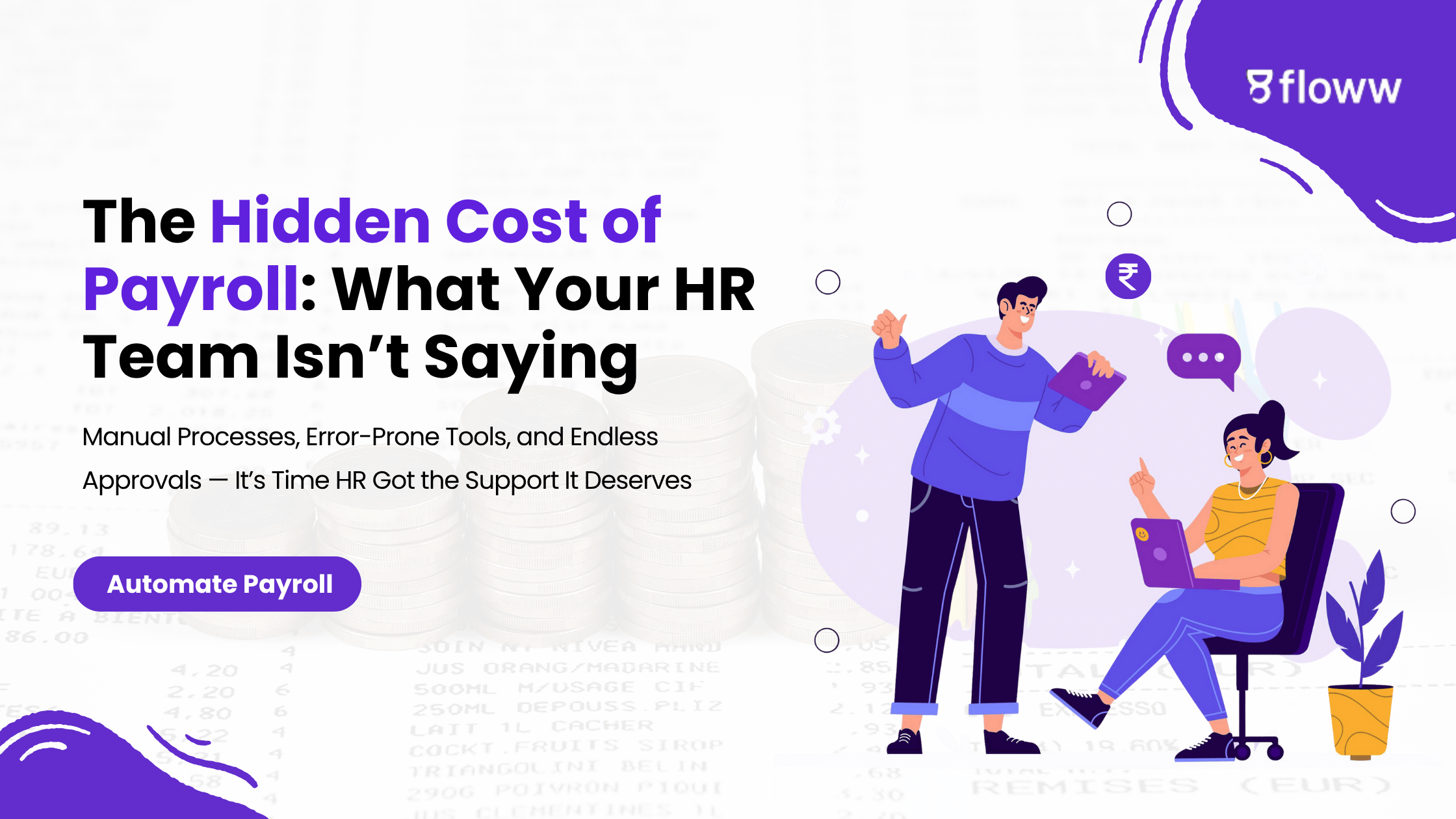What’s Eating Up Your HR’s Time? Is It Payroll?
What’s really draining your HR team’s time? It’s not just emails or catch-ups—it’s payroll. All those spreadsheets, approvals, and last-minute fixes? They add up. This blog dives into how payroll might be slowing your team down and what you can do to change that.

Payroll isn’t just about pressing a button. Even a small team can require dozens of manual steps. And these steps include everything from attendance imports, timesheet reviews, late approvals, tax calculations, allowance adjustments, bank formatting, error checks, and complaint handling. Each step introduces risk and most importantly- time drains.
As teams grow, even just to 30 or 50, the complexity multiplies. Multiple roles, varying allowances, tax exemptions, compliance requirements, and changing regulations, everything complicates. When data is handled manually, mistakes aren’t anomalies, they’re expected.
And HR, unlike finance, doesn’t have systems designed to absorb these errors. Their tools are often spreadsheets, generic platforms, or disjointed apps that leave them constantly behind.
The Cost of Fragmented Payroll

The impact of fragmented payroll can gradually become a huge obstacle for your business.
HR Becomes Reactive, Not Strategic
If 40–60% of HR’s time is spent on payroll prep and follow-ups, there’s almost no bandwidth for bigger issues like employee engagement, wellness, or retention.
Employee Trust Takes a Hit
Overpayments, underpayments, missing allowances, they chip away at confidence. For teams living paycheck to paycheck, even small errors feel like breaches of faith.
Compliance Risks Soar
India’s tax and labor rules aren’t for amateurs. Miss deadlines or misapply rules, and penalties follow. Manual systems raise the odds of mistakes.
Finance Misalignment Grows
Payroll errors need corrections. Adjustments disrupt accounting, trust, and financial forecasts. Every delay creates a chain reaction downstream.
So when you strip this all down, payroll isn’t just a task. It’s a bottleneck. And it stays that way until HR swaps manual methods for systems built to scale.
How Payroll Automation Frees HR And Protects Your Business

At its core, an automated payroll system isn’t just a calculator. It is an engine that brings order to complexity. It standardizes salary processes, schedules recurring tasks, reconciles data from multiple sources, and makes everything auditable, repeatable, and efficient.
A robust payroll automation setup begins by streamlining data collection. Instead of HR professionals manually pulling attendance records or chasing managers for overtime data, the system automatically gathers inputs from biometric devices, timesheet tools, or expense trackers. Everything syncs in real-time, leaving little room for error or oversight.
Once the data is in, the system processes it using built-in rules. This includes everything from tax slabs and statutory deductions to allowances, benefits, and regional compliance policies. These rules are pre-set, updated when needed, and applied automatically. There goes the need to worry about misapplied formulas or outdated tax percentages.
The real game-changer is how these systems validate errors. Instead of waiting for a disgruntled employee to report a missed reimbursement, the software flags anomalies instantly. It gives HR a window to correct issues before they snowball into bigger problems.
When it comes time to issue payslips, there’s no scrambling with templates or mass emails. The system generates and distributes them automatically, formatted and personalized, right to each employee’s inbox or portal. Similarly, payout files are created in formats compatible with your bank’s bulk upload systems.
Finally, all of this is backed by real-time reporting. With a few clicks, HR or finance can access detailed summaries for audits, compliance filings, or internal analysis. It’s payroll done right, not just faster, but smarter, safer, and built for scale.
But Aren’t These Features Available in Regular HR Tools?

It’s easy to assume that all HR tools come with some form of payroll feature. But the difference lies in depth, not just in availability. A payroll tab inside a generic HR dashboard isn’t the same as a truly automated payroll system. A downloadable spreadsheet template, no matter how well-designed, still relies on manual effort. That’s not automation. It’s a workaround with a fancier name.
True payroll automation is far more dynamic. For instance, attendance doesn’t require manual uploads or reconciliation. Biometric devices or digital punch-ins sync directly with the system, feeding real-time data into the payroll engine. Calculations aren’t just done using static formulas; they follow current tax slabs, exemptions, and compliance logic that updates automatically, removing the need for HR teams to stay on top of changing laws.
Smart systems go a step further by setting triggers for anomalies. A missing attendance entry, an unusually high overtime claim, or a sudden payroll spike prompts alerts to relevant stakeholders before it turns into a crisis.
Even distribution gets a facelift. Instead of generating payslips one by one or preparing a manual bank file, the platform handles it all. You validate payroll, click a button, and it’s done. And behind the scenes, every step is logged. A complete audit trail is maintained, which becomes a lifesaver during compliance checks or internal reviews.
This level of sophistication is what separates a fully automated payroll system from patchy solutions that only solve part of the problem. It’s not about having a payroll feature, it’s about having a system that removes friction, reduces risk, and scales as you grow.
Why MSMEs Must Jump On This Early

For many MSMEs, the instinct is to delay automation until the team gets bigger or processes get “more complex.” But that mindset often becomes a roadblock to scale. In reality, payroll automation delivers its biggest benefits before you hit rapid growth.
The truth is, errors scale. Manually onboarding 20 employees might feel manageable, but when that number hits 200, those same manual processes start to crumble. What once took an hour now eats up days. What once was simple becomes chaotic. Small inefficiencies compound and start costing real money and morale.
More importantly, automation forces early standardization. When payroll systems are built into your business from the ground up, it naturally tightens your HR policies and approval hierarchies. Things like leave policies, expense caps, and bonus structures start following clear logic. That kind of clarity protects you when things get busy.

